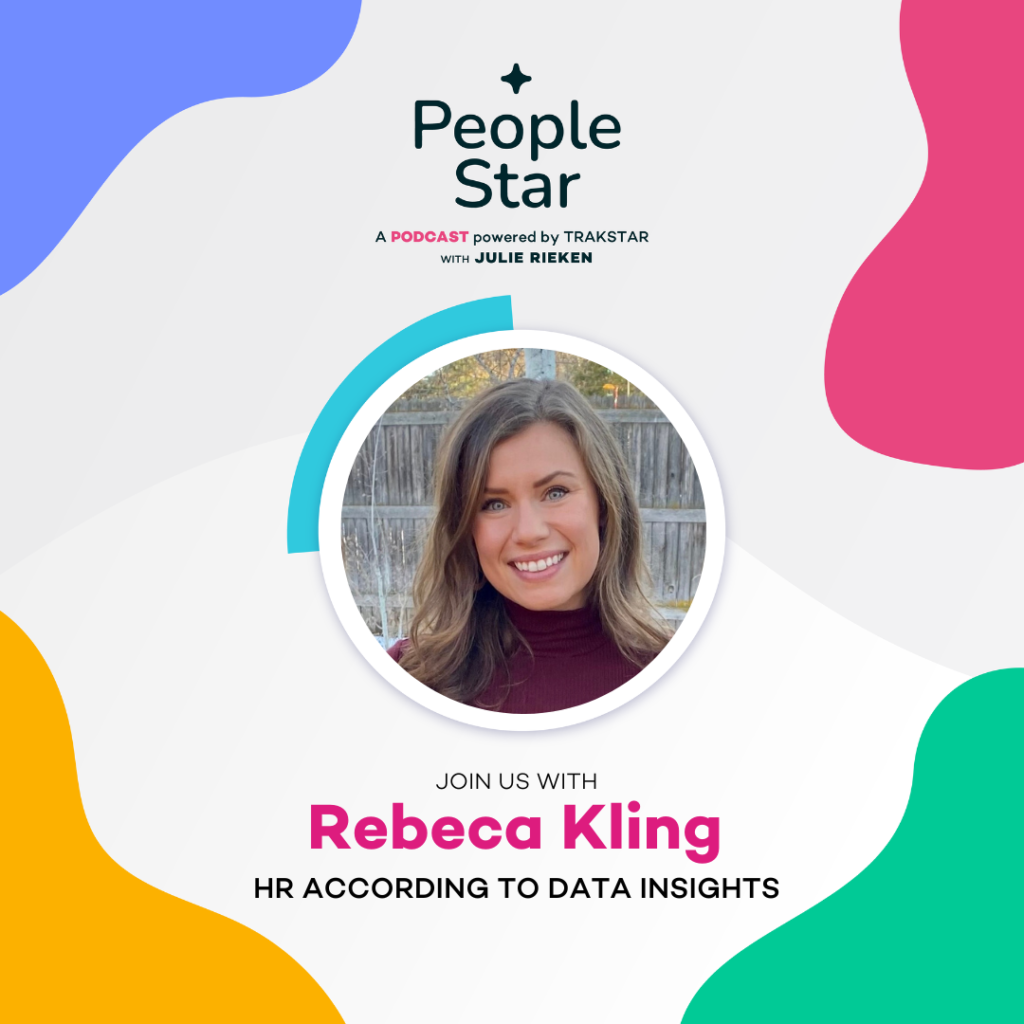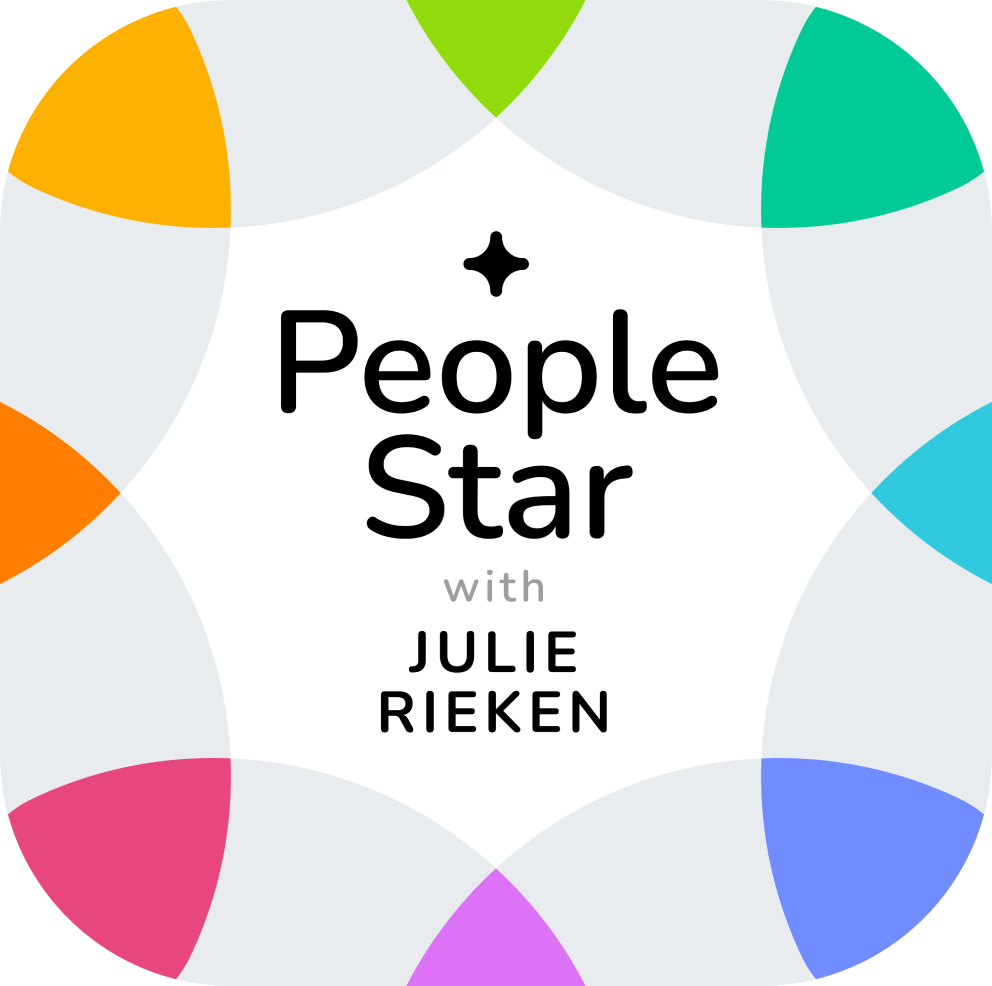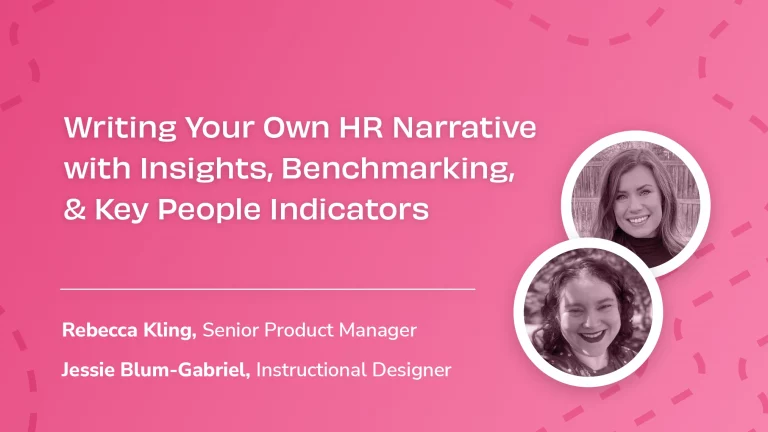PeopleStar_Rebeca Kling: this mp3 audio file was automatically transcribed by Sonix with the best speech-to-text algorithms. This transcript may contain errors.
PeopleStar Intro/Outro:
Welcome to the PeopleStar Podcast. We deliver leadership perspectives from industry experts on their people, architecture, routines, and culture as they solve HR's newest challenges. And now your host, Julie Rieken.
Julie Rieken:
Hello podcast listeners. Julie Rieken, host of PeopleStar. Today it is a distinct honor, I've got Rebeca Kling with us. Rebeca is a superstar. She is our product manager for Insights. And insights is something we've recently released at TrakStar, and it's been a really important addition to our suite of offerings. We did it because we've been hearing about the shift in HR over time and how HR directors need better and more information to help guide their decisions and make decisions about the workforce and that HR's role, as many of you, I'm sure are nodding your heads right now out there, your roles have been elevated, and more important than ever in a really tough space. Well, Rebeca is helping bring additional value to you, and she is laser-focused on thinking about how data can help you. And today we're just here to talk about it. What is it? How are we thinking about it? How is she thinking about delivering value to you? So, Rebeca, welcome to the podcast!
Rebeca Kling:
Hi, Julie. Thanks for having me.
Julie Rieken:
Super exciting. So we were just having a conversation and I just want to start with something just a little personal because I think it's fun. Rebecca is not a native Coloradoan and we are based in Colorado, you actually come from somewhere else. Tell us about, about where you come from and how you got here to Colorado.
Rebeca Kling:
Sure. So I grew up in Wilmington, Delaware, which if you have never been to Delaware, there's not a whole lot to do there growing up. So when I went to college, I chose to go a little further away and I went to school at Northeastern University in Boston, where I met my now husband, so we just got married about a month ago, so we met there and then when we graduated, he is from the West Coast and I'm obviously from East Coast and we decided to appease both of our families and pick somewhere in the middle. So we landed on Denver and we have been here ever since and we absolutely love it. We love to do all the outdoorsy stuff, we love the hiking, and it's just a really great place to live and, obviously, TrakStar's here, so that's great too.
Julie Rieken:
Awesome. Congratulations on, on your wedding. That's so exciting. That's a beautiful lead into the next question. How did you find us here at TrakStar? We needed somebody like you, how did we match up? We're thrilled.
Rebeca Kling:
Oh, yeah! So I was previously working at another HR tech company, and I was actually working on a team that focused on the job application side of that software. I was definitely interested in staying in the HR space, so when Michelle, our director of product here at TrakStar, reached out, we had previously worked together at that company, it seemed like a great fit. I wanted to stay in a space. I had a lot of interest in HR, but I wanted something a little bit more greenfield and insights was just that. It was a relatively new team, really a new product offering here at TrakStar, and I really resonated with the strategy and the overall vision for the product.
Julie Rieken:
I love that, we share a passion for HR. I think both you and I love the community and want to serve in the best way that we can, which leads us to why TrakStar built insights. And it was in order to provide HR professionals with better data and analytics. So can you just tell us, you said that you were looking for something, that you like data and analytics, why do you like it? Why do you like it in analytics? Tell us a little bit about that.
Rebeca Kling:
So the thing that excites me the most about this space in particular is kind of going back to what you said at the beginning, that these HR leaders have never had access to this kind of data before. HR has historically been a relatively qualitative space, and in the last few years it has really transformed. So enabling our customers to with the data that they need to prove that their efforts are effective, that their hiring trends are in line with the industry, it directly impacts the business decisions that they are making and all we are doing is empowering them with that data, which is really exciting for me.
Julie Rieken:
I love that. HR people are faced with more than they've ever been faced with in terms of making those decisions. And I think that's why we were so excited about bringing insights together. So let's just indulge our listeners here, especially those that are TrakStar customers, let's just talk about what is insights. Have you seen it used and what's it for?
Rebeca Kling:
Yeah, so Insights is our in-house data and analytics solution here at TrakStar, and it is powered by Amazon Quicksight, so that is the platform that we have built our insights dashboards on. And you'll hear me talk a lot about dashboards, so our base offering for TrakStar Insights is the Insights Dashboard. And then we are going to be iterating onto that and adding more and more dashboards, more and more data analysis, sophistication to those dashboards. So we, here at TrakStar are using the data that our customers are already generating just by using our products to create these dashboards where we are analyzing trends, key ratios and data points, and extrapolating future trends so that our customers are able to make those better business decisions. So these dashboards are in addition to the product reporting that we currently offer, and they are directly embedded into our products. So you don't have to go to a third party site to access this analysis.
Julie Rieken:
I love that. I'm going to take a little diversion here because I think I'd like to give our listeners just an example of the kinds of cool things that you've built. And I think about one of the things that's important to every leader and to every HR person, we want to keep our top performers, who are our best people and are we keeping them? Can you just talk about, about that particular, that's one component to our dashboards that you're building. Just talk about why that one and what does it look like? How do we share that data?
Rebeca Kling:
Yeah, So, so that was one of the primary focuses for the Benchmarking Dashboard, which we recently released for our performing customers in August. And we really wanted to focus on that question of retention and how do we keep our top performers. So how we have analyzed that data and represented that data is breaking down our customer's data and performance data to show performance percentiles. So we're really honing in on that top 20th percentile of performers and showing the retention rates of that group as it compares to our customer's peers. So we're also we're comparing them against others in their industry and other companies of the same size. So that really allows our customers to hone in on those people that they really want to keep and determine if they're normal, if they are losing their top performers at a higher rate than their competitors. And we're also offering suggestions for how to improve those retention rates if they're showing a negative trend.
Julie Rieken:
But there was only one piece of data that could come out of insights, and there are many, but if there's only one that's one that is of great interest to every HR person and to every leader in every organization, are our top people staying or are we losing them? And and that allows us to take direct actions that influence the organization, so thank you for that piece and for those people that haven't seen insights, that's but one of the valuable nuggets. So thank you for expanding on that one.
Rebeca Kling:
Of course! We're also showing for that top performer group. We're also showing how engage those people are. So for our customers that use our engagement survey tool, we are comparing how engaged that top performer group is and how they are being retained in the organization. So that's just another way that we're incorporating the features of our product into the insights Benchmarking Dashboard..
Julie Rieken:
I love that. Let's just talk about some customer examples of who's using dashboards and, and and our insights product. What have you seen from them? I know we have a couple of standout examples and they're helping us build our, inform our direction. So do you have any good stories for us?
Rebeca Kling:
Sure, Yeah. We have talked to so many customers while we have been building these dashboards and host launching, we're following up making sure that all of the needs are being addressed. One an example that comes to mind is a higher education customer, and she has been instrumental in helping us, we're actually working with her to build out a case study and they have used the Insights dashboard to really pull apart how each department in their organization is scoring their employees and making sure that their scores are normalized. That has been something that they've really struggled with in the past. So insights giving them that high level view of each department and the scores within each department is helping them standardize their scoring so that it is more reportable and actionable. So the customer that we specifically spoke to works with the provost on a regular basis to determine department outcome issues based on those insights that we are offering to them.
Julie Rieken:
I love that those of us in the HR world, people like you and I and all of our HR directors there, we are really interested in the equitable application of employment standards and ensuring that we have some consistency across the organization. And it sounds like Insights is helping this customer deliver on that promise, and that's a big deal.
Rebeca Kling:
Yeah, absolutely. We also have a customer using our higher product and what they were particularly interested in where both the time to fill metrics. So time to fill a specific position from the time the position was posted, but then also time to hire from the applicant perspective. So those two things are distinctly different. One says more about your posting, but also about the job market and the other says a lot more about the efficiency of your hiring process. How quickly are you getting people through that hiring process? Because as you and I both know, the quicker you can move on an applicant, the more likely you are to actually get them and hire them successfully.
Julie Rieken:
Not that it's ever happened here …. that organizations were in a very competitive labor market and wanted to definitely speed that process up to ensure that they had the ability to hire the people that they wanted quickly. Those metrics make a ton of sense.
Rebeca Kling:
Yeah, absolutely.
Julie Rieken:
You know, you mentioned something that I want to pull a thread on, and it's benchmarking.
Rebeca Kling:
Yeah!
Julie Rieken:
We're not just reporting on the reduction in time, but you talked about comparing to peer groups, that's always interesting to me. Like when I think about other organizations, are we normal or are there people better than us or worse than us? Where do we stand? Can you just talk about benchmarking? What's it for and how are we doing that?
Rebeca Kling:
Sure. Yeah. So benchmarking really the question that we are trying to answer and we're trying to enable our customers to be able to answer is the am I normal? It is so much easier to just compare your historical trends over time, but it's not as easy to get that peer group level information. Are other people in our industry hiring quicker than us? How engaged are their people? Are they retaining people better than we are? And how do we, how do we get to be better, basically? So here at TrakStar, we are using, like I said before, all of our own internal data. So when we say benchmarking, we are not benchmarking against industry data that we get from another source, we are not sending out surveys to get this benchmarking data, we're using all of our own internal data, aggregating it, anonymizing it, of course, so that we allow our customers to compare themselves against others in their industry and other companies of a similar size. We focused in on those two different dimensions because there is a story within both of them. Obviously, if, we are in the tech industry, but we have 100 employees versus Google who I don't even know how many employees they have, those metrics aren't necessarily going to be the same across those two. So that's why we felt it really important to include the comparison for both of those peer groups.
Julie Rieken:
I love that. And I find it so interesting, in any report that I get where there's a benchmark, I'm always opening it as a leader to find out where do we stand, because there are things that are different. So I love that that you've added benchmarking to, to what we're doing. So thank you for that. I know our customers are going to find that just as valuable as I do. And when you think about HR leaders and benchmarking, how do you think they should think about it?
Rebeca Kling:
They should think about it from the perspective of how does this impact my business and how will it impact my business in the future? I think allowing us ourselves to compare to others in our industry tells us a lot about where the industry is going. So a lot of benchmarks that you find online center around different processes and efficiencies which always can be improved. But what we're really trying to get out here are the benchmarks focused on human capital and those long lasting business outcomes. So that's really what we have focused on for the Perform Benchmarking Dashboard. It's really retention heavy and we're really trying to identify the motivations of the workforce and why people leave. This benchmark dashboard that we released is really just the beginning and we want to keep iterating on it, but allowing our customers to compare their retention to their peer groups, but also across performance bands. And we're also allowing them to compare the retention across different tenure groups within their own company tells a lot about how the business is doing and what they could potentially do differently to have greater success in the future.
Julie Rieken:
I love that, losing employees and keeping employees has direct financial impacts on the business.
Rebeca Kling:
Yes.
Julie Rieken:
What are you hearing around the cost of retention and attrition? Are you, I'm sure you're studied up in this, and I know that we're focused on it for a reason. What do you think the impact is to organizations?
Rebeca Kling:
Yeah, there's been a lot of research around this, especially in the last few years with the pandemic and the great resignation, as they call it. So did some research, and Sherm has estimated that it costs nearly 30,000 dollars to recruit and train someone to replace a manager who makes $40,000 dollars a year, so it's ..
Julie Rieken:
Is that all? It feels like it's more expensive than that. That's like a really high number I would have even estimated, that's a high number and it's hard.
Rebeca Kling:
Yeah, Yeah, it is. … That cost doesn't account for loss of time, resources, productivity, all of the people that have to kind of hold that position up while you are filling it, there's so much opportunity cost. So really retaining your people is how your organization is going to succeed. All of these people with all of this institutional knowledge, as soon as they walk out the door, all of that goes with them.
Julie Rieken:
Yeah, this is a big deal for organizations. So I love that we're thinking about measuring the effects of engagement, top performance on retention and the benchmarking that we're doing, thank you for delivering value to HR. It's, it's a soft spot or a warm spot, however, this is a place in our hearts that we hold dear. And I appreciate you helping deliver this to to the community. Thank you, Rebecca.
Julie Rieken:
Thank you, Julie. Yeah, we're super excited, and we have a lot on our roadmap for the rest of the year and years to come. So just really excited to keep the momentum going with Insights.
PeopleStar Intro/Outro:
Thanks for listening to the PeopleStar Podcast. For the show notes, transcript, resources, and more ways to get a seat at the table, visit us at TrakStar.com/Podcast.
Sonix has many features that you’d love including powerful integrations and APIs, enterprise-grade admin tools, automated subtitles, secure transcription and file storage, and easily transcribe your Zoom meetings. Try Sonix for free today.




